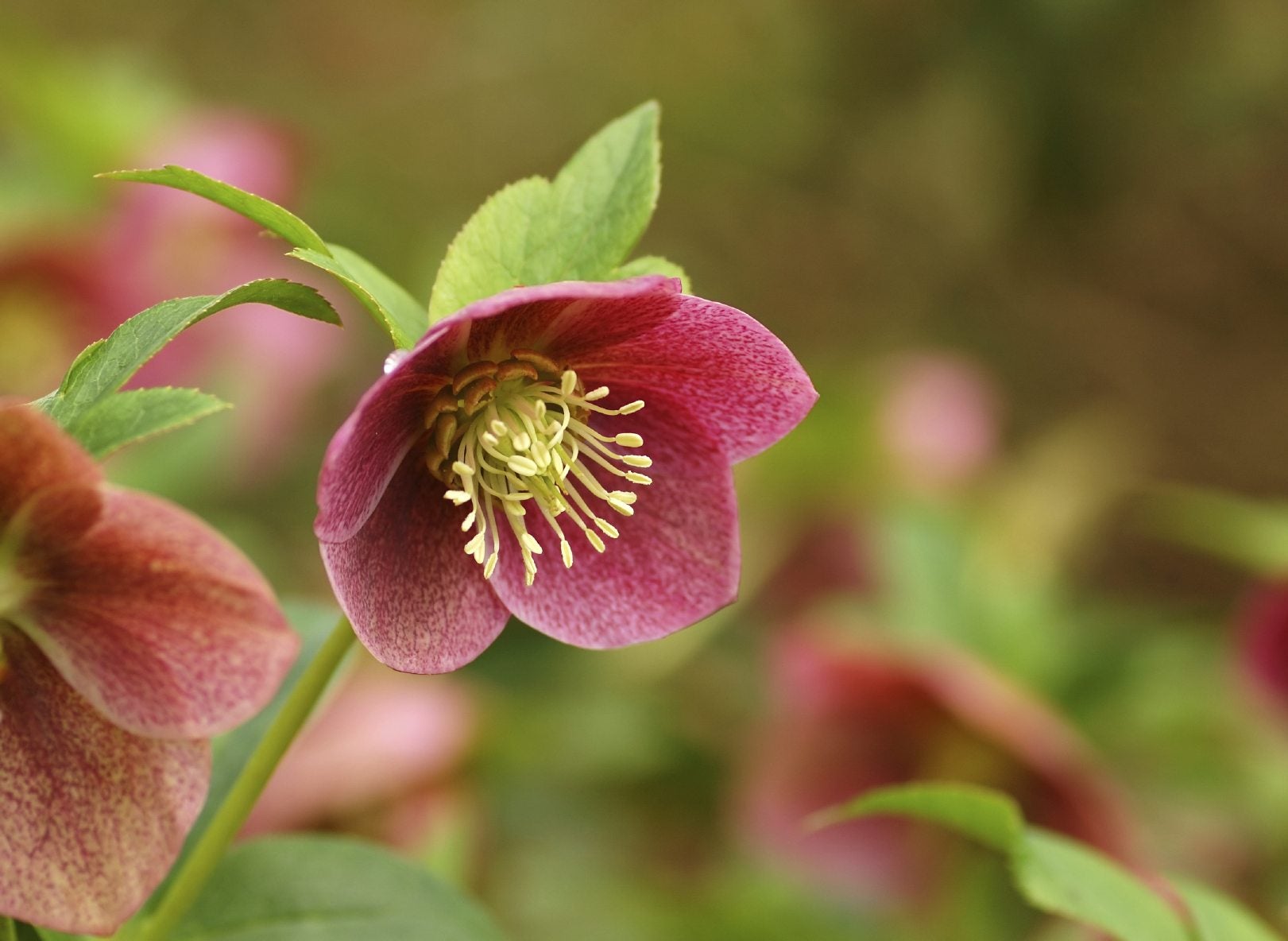Hellebore Care - How To Grow Hellebores


Flowers of hellebores are a welcome sight when they bloom in late winter to early spring, sometimes while the ground is still covered with snow. Different varieties of the hellebore plant offer a range of flower colors, from white to black.
One of the earliest blooms spotted in many areas, nodding hellebore flowers are often fragrant and long-lasting. Growing hellebores is a worthwhile task for the gardener.
Aside from lovely and unusual flowers, the hellebore plant has attractive, green foliage that is aesthetically pleasing in the landscape. Once established, hellebore care is minimal.
This herbaceous or evergreen perennial is disliked by deer and other animal pests prone to munching on plants. All parts of the hellebore plant are poisonous, so take care to keep children and pets away.
Tips for Growing Hellebores
When planting from seed or division, place the hellebore into well-draining, organic soil in filtered sun or a shady location. The hellebore plant will return for many years; make sure the space will accommodate growth and has proper sunlight.
Hellebores need no more than a few hours of dappled light and grow successfully in shady areas. Plant the hellebore under deciduous trees or scattered through a woodland garden or shaded natural area Soaking the soil in which the hellebore is growing helps the hellebore plant to look its best.
Hellebore care includes the removal of older leaves when they appear damaged. Care for hellebores should also include careful fertilization. Too much nitrogen may result in lush foliage and a shortage of blooms.
Sign up for the Gardening Know How newsletter today and receive a free copy of our e-book "How to Grow Delicious Tomatoes".
Plant hellebore seeds in the fall. A 60-day moist chilling period is needed when planting seeds of the hellebore plant. Planting seed in fall allows this to happen naturally in areas with cold winters.
Wait three to four years for blooms on young plants grown from seed. Divide overgrown clumps in spring, after flowering, or in autumn.
Types of Hellebores
While many varieties of hellebores exist, Helleborus orientalis, the Lenten Rose, is among the earliest of winter bloomers and offers the widest selection of colors. Helleborus foetidus, called the stinking bear foot or bear paw hellebore, offers flowers in a pastel shade of green and has an unusual fragrance disliked by some; consequently it may be referred to as stinking.
The foliage of the bear foot hellebore is segmented and serrated, sometimes turning to deep red in cold weather, when it is highly ornamental. Flowers may be edged in the deep red to burgundy color.
This hellebore plant prefers more sun than its oriental counterparts. Helleborus niger, the Christmas Rose, features 3-inch (7.5 cm.) blooms of the purest white. Many hybrids of hellebores offer a range of flower colors; the colors often change as they mature. Hellebore care is simple and worthwhile.
Plant a variety of hellebores in your garden in the shade for a lovely spring flower.

Becca Badgett was a regular contributor to Gardening Know How for ten years. Co-author of the book How to Grow an EMERGENCY Garden, Becca specializes in succulent and cactus gardening.